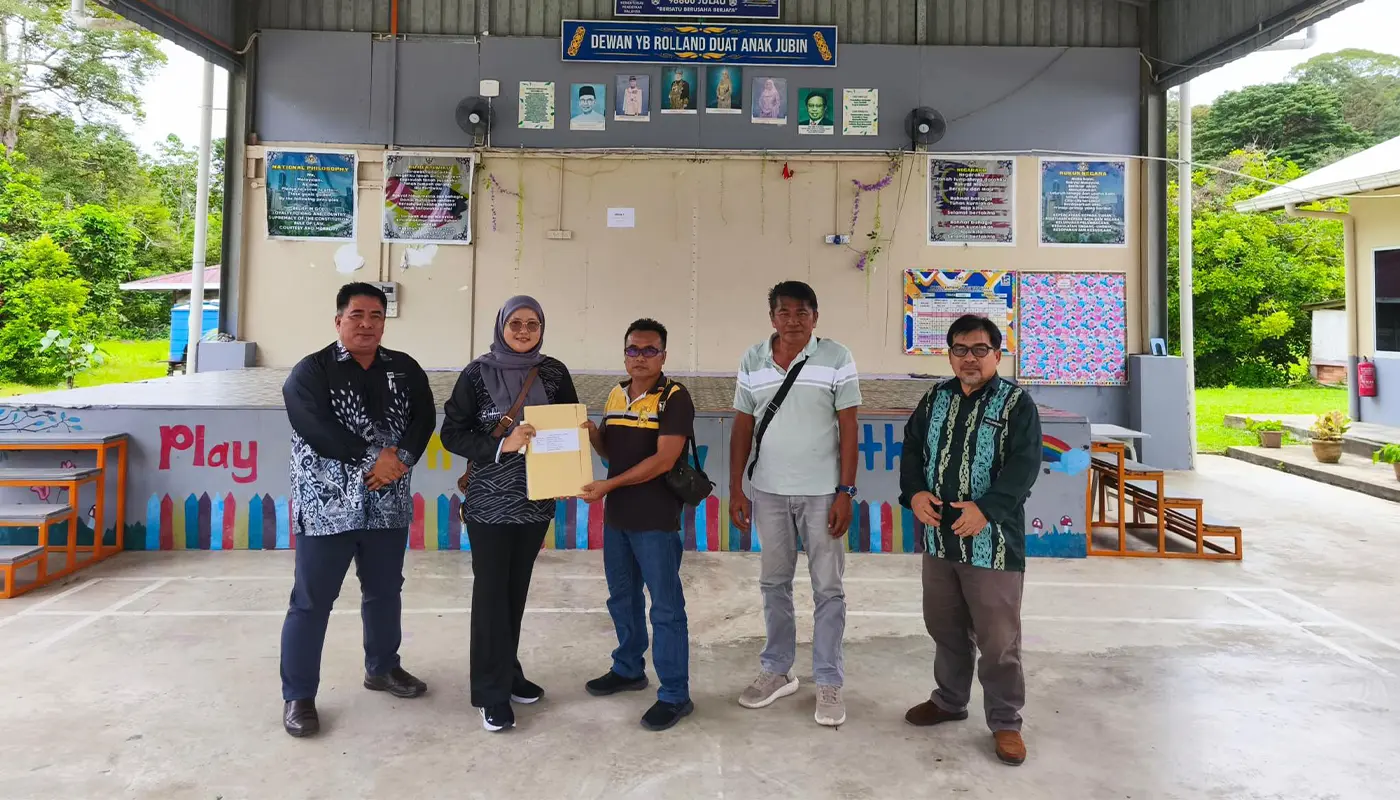PAKAN – The Sarawak Government has reaffirmed its commitment to rural education development with the allocation of RM100,000 to upgrade the hall of Sekolah Kebangsaan (SK) Ulu Entaih under the Rural Transformation Programme (RTP) for the Meluan constituency.
The project, which began in October 2025, is scheduled for completion within four months. Once finished, the upgraded hall will serve as a multipurpose facility for both the school and the surrounding community.
Headmaster Kennedy Ating Lansam expressed gratitude to Meluan State Assemblyman (ADUN) Dato Rolland Duat Jubin for securing the allocation, noting that the initiative reflects the government’s concern for the welfare of rural students.
“On behalf of the school community and the Parent-Teacher Association (PIBG), we are very grateful to Dato Rolland Duat and the Gabungan Parti Sarawak (GPS) Government for always helping rural schools provide more comfortable facilities for students,” he said.
Kennedy explained that the upgraded hall will have a significant impact on the school’s activities, including co-curricular programmes, sports, cultural events, and parent-teacher meetings. Beyond school functions, the hall will also serve as a community hub for official events and gatherings.
He added that the project would “inject new enthusiasm into the school community to strengthen the quality of learning and create a more conducive environment.”
The initiative is part of the Sarawak Government’s broader strategy to bridge the rural-urban education gap by improving infrastructure in remote schools.
In recent years, RTP allocations have been channelled into projects such as classroom upgrades, ICT facilities, and rural school connectivity improvements.
Community leaders in Pakan welcomed the project, noting that the hall upgrade will not only benefit students but also provide a shared space for the wider community, reinforcing the role of schools as centres of social and cultural development in rural Sarawak.
The hall upgrade at SK Ulu Entaih is expected to stand as a symbol of government support for rural education, ensuring that students in remote areas have access to facilities that encourage learning, creativity, and community engagement.







